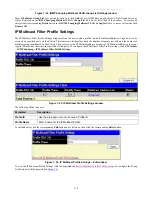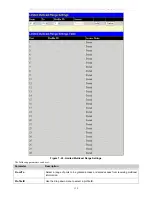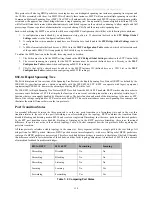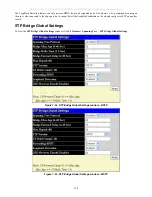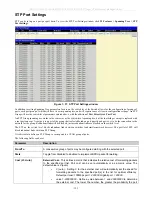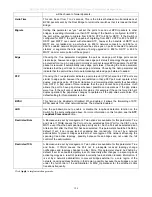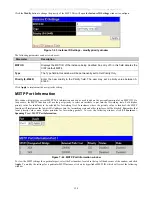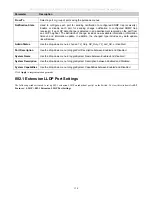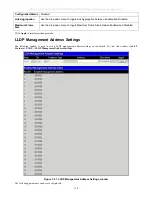
DES-3028 DES-3028P DES-3028G DES-3052 DES-3052P Layer 2 Fast Ethernet Managed Switch
will be chosen to forward packets.
Hello Time
This can be set from
1
to
2
seconds. This is the interval between two transmissions of
BPDU packets sent by the Root Bridge to tell all other switches that it is indeed the Root
Bridge.
Migrate
Setting this parameter as "
yes
" will set the ports to send out BPDU packets to other
bridges, requesting information on their STP setting If the Switch is configured for RSTP,
the port will be capable to migrate from 802.1d STP to 802.1w RSTP. If the Switch is
configured for MSTP, the port is capable of migrating from 802.1d STP to 802.1s MSTP.
RSTP and MSTP can coexist with standard STP, however the benefits of RSTP and
MSTP are not realized on a port where an 802.1d network connects to an 802.1w or
802.1s enabled network. Migration should be set as yes on ports connected to network
stations or segments that are capable of being upgraded to 802.1w RSTP or 802.1s
MSTP on all or some portion of the segment.
Edge
Choosing the
True
parameter designates the port as an edge port. Edge ports cannot
create loops, however an edge port can lose edge port status if a topology change creates
a potential for a loop. An edge port normally should not receive BPDU packets. If a BPDU
packet is received, it automatically loses edge port status. Choosing the
False
parameter
indicates that the port does not have edge port status. Choosing the
Auto
parameter will
indicate that the port will be able to automatically enable edge port status if needed.
P2P
Choosing the
True
parameter indicates a point-to-point (P2P) shared link. P2P ports are
similar to edge ports, however they are restricted in that a P2P port must operate in full-
duplex. Like edge ports, P2P ports transition to a forwarding state rapidly thus benefiting
from RSTP. A p2p value of
false
indicates that the port cannot have p2p status.
Auto
allows the port to have p2p status whenever possible and operate as if the p2p status
were true. If the port cannot maintain this status, (for example if the port is forced to half-
duplex operation) the p2p status changes to operate as if the p2p value were
False
. The
default setting for this parameter is
Auto
.
BPDU
This field can be
Enabled
or
Disabled.
When
Enabled,
it allows the forwarding of STP
BPDU packets from other network devices. The default is
Enabled
.
LBD
Use the pull-down menu to enable or disable the loop-back detection function on the
Switch for the ports configured above. For more information on this function, see the
STP
LoopBack Prevention
section.
Restricted Role
A Boolean value set by management. Two options are available for this parameter: True
and False. If TRUE causes the Port not to be selected as Root Port for the CIST or any
MSTI, even it has the best spanning tree priority vector. Such a Port will be selected as an
Alternate Port after the Root Port has been selected. This parameter should be FALSE by
default. If set, it can cause lack of spanning tree connectivity. It is set by a network
administrator to prevent bridges external to a core region of the network influencing the
spanning tree active topology, possibly because those bridges are not under the full
control of the administrator.
Restricted TCN
A Boolean value set by management. Two options are available for this parameter: True
and False. If TRUE causes the Port not to propagate received topology change
notifications and topology changes to other Ports. This parameter should be FALSE by
default. If set it can cause temporary loss of connectivity after changes in a spanning trees
active topology as a result of persistent incorrectly learned station location information. It
is set by a network administrator to prevent bridges external to a core region of the
network, causing address flushing in that region, possibly because those bridges are not
under the full control of the administrator or MAC_Operational for the attached LANs
transitions frequently.
Click
Apply
to implement changes made.
124
Summary of Contents for DES-3028
Page 306: ......
Page 307: ......
Page 327: ...D Link D Link D Link D Link 7 495 744 00 99 http www dlink ru e mail support dlink ru...
Page 332: ...Technical Support Web Web URL http www dlink jp com...

